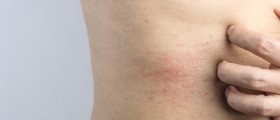
Poison oak isthe type of plant which can cause allergic reactions. This allergy mostcommonly appear on the skin that got in the contact with poison oak. You couldtouch the steams, berries, leaves, flowers or roots of the plant and thendevelop the allergy. However, it doesn’t have to be direct contact with theplant. Sometimes, it’s enough to touch the thing that was in contact with thepoison oak (clothes, gardening tools or fur) and you can develop the rash.
Poison OakAllergy
As theallergen (the substance responsible for the allergic reaction in the plant),scientists determine the oil of the poison oak, known as urushiol. All parts ofthe poison oak contain this oil and because of that fact any part of the plant cancause allergic reaction.
The poisonoak doesn’t affect every person that comes in touch with it, but just somesensitive to its oil. This type of allergy is known as the contact dermatitis. Inmost cases, it is characterized by redness of the skin, itchiness and smallbumps and hives on the part of the skin that got in the contact with the plant. Thesestreaks and lines on the skin might also be more serious in people sensitive tourushiol. Extremely sensitive to this plant can develop large blisters and hives,leaking with fluid. These patients can also experience the spreading of therash and swelling of different parts of the body: the face, neck, eyelids, mouthor genitals.
Usually, therash is developed 8 hours to 2 days after your contact with the poison oak, butthe first symptoms may also appear sooner or later. In some cases, peopledeveloped the allergy just 5 hours after the contact with urushiol. Some other patientshaven’t had any symptoms for 15 days and then they started to experience bumpsand hives, specific for the poison oak allergy.
Do not worry- this rash is not contagious, even in severe cases, and you won’t get or pass poisonoak allergy from/to someone.
How to TreatPoison Oak Allergy
Usually, thesymptoms of contact dermatitis disappear without any treatment for 2 to 3weeks, but it could persist up to 6 weeks in people sensitive to this plant.
There areseveral methods you might try at home, to relieve mild to moderate symptoms. Beaware that it is a good idea to consult your doctor, and that severe skinreaction should always be treated by your medical specialist.
First ofall, wash the area of the body that got in contact with the poison oak, or usesome cool baths or compresses to relieve the itching and redness. Gels made of aloe vera or the stems of the jewel weed plant are also found to be veryeffective in relieving the rash and pain. Aloe vera gel are said to be moreefficient if combined with some other plant extracts, such as lavender, comfreyor goldenseal. You can also use some oatmeal, vinegar or baking soda whilebathing. Add these substances to your bath and you should feel better immediately.
There arealso some over the counter (OTC) antihistamines and Calamine lotions that canease allergic symptoms. If your rash is serious or these home treatments don’t work consult your doctor.






-Causes,-Symptoms-And-Diagnosis_f_280x120.jpg)










Your thoughts on this
Loading...